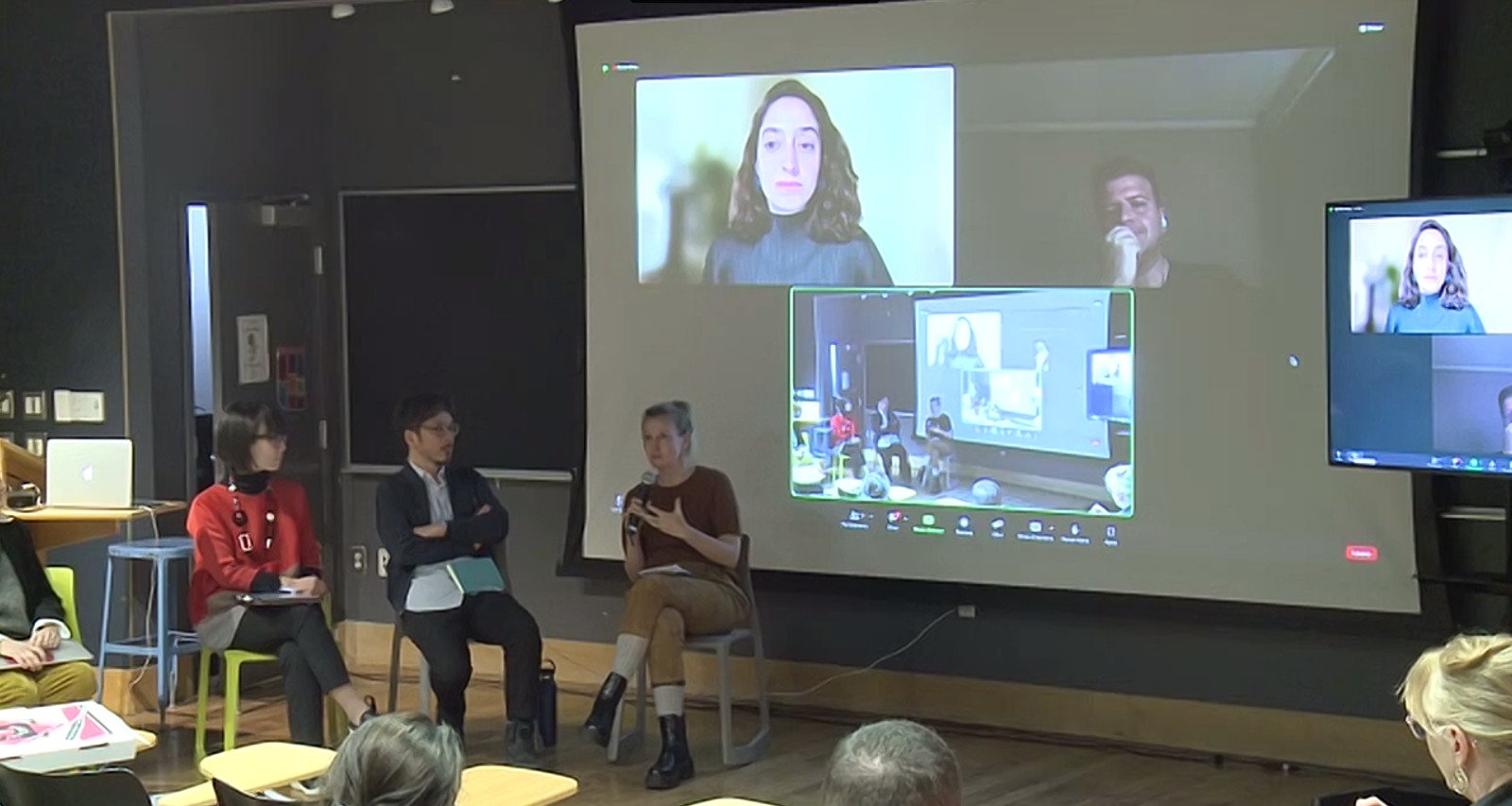Junko Yamamoto and her colleagues at Rhode Island School of Design hosted a colloquium with guests, Michelle Millar Fisher and Sameep Padora.
(Photo credit: Eleanor Cody, Daniel Daou)
REASONED FUTURES, COLLECTIVE IMAGINARIES
Date: Thursday March 2nd, 2023
Time: 6:00 pm - 8:00 pm
Location: Room 106, Bayard Ewing Building (BEB)
Rhode Island School of Design
Guests: Michelle Millar Fisher, Boston, US
Curator Museum of Fine Arts, Boston
Curator “Designs for Different Futures”
Sameep Padora, Mumbai, India
Principal Sameep Padora & Associates
Director of sPare
The event was co-organized by RISD Thesis Faculty:
Tatjana Crossley, Armando Hashimoto, Marthe Rowen, Junko Yamamoto
Throughout history, architecture has been a representational medium that ingrains our belief systems, values, societal organization, relation to the planet and world view at any given time. In the fifties, modernist architecture synthesized new systems that aspired to be universal, addressing issues to produce a new and better life for global citizens, urban plans that would replace shacks and shanty towns with hygienic, orderly buildings, and design methodologies that integrated efficiencies and provided public shared spaces. While modernist architecture was far from successful, we have continued to learn from its failures to produce architectures that address these same social and sustainable issues in more intersectional and nuanced ways.
The worldview under which such modernist projects were designed, provoked a standardization of urban life, an undercutting of difference, a normalization of aspirations, and a top down approach that created the illusion of a right solution, deeming many others as defective and unfit to yield potential alternatives. Design became as much a tool to achieve better futures as an instrument of power and control in the dissemination of a set of values and ideas
As we face the climate emergency, as we expect to almost double the need for housing in the next 80 years, as we start to think about how to relocate complete towns or witness the foundation of others as a result of migrations; How can design become an agent for collective imagination? To what extent can we see the design of the future built environment as both forward thinking and backward-looking, both global and local?



